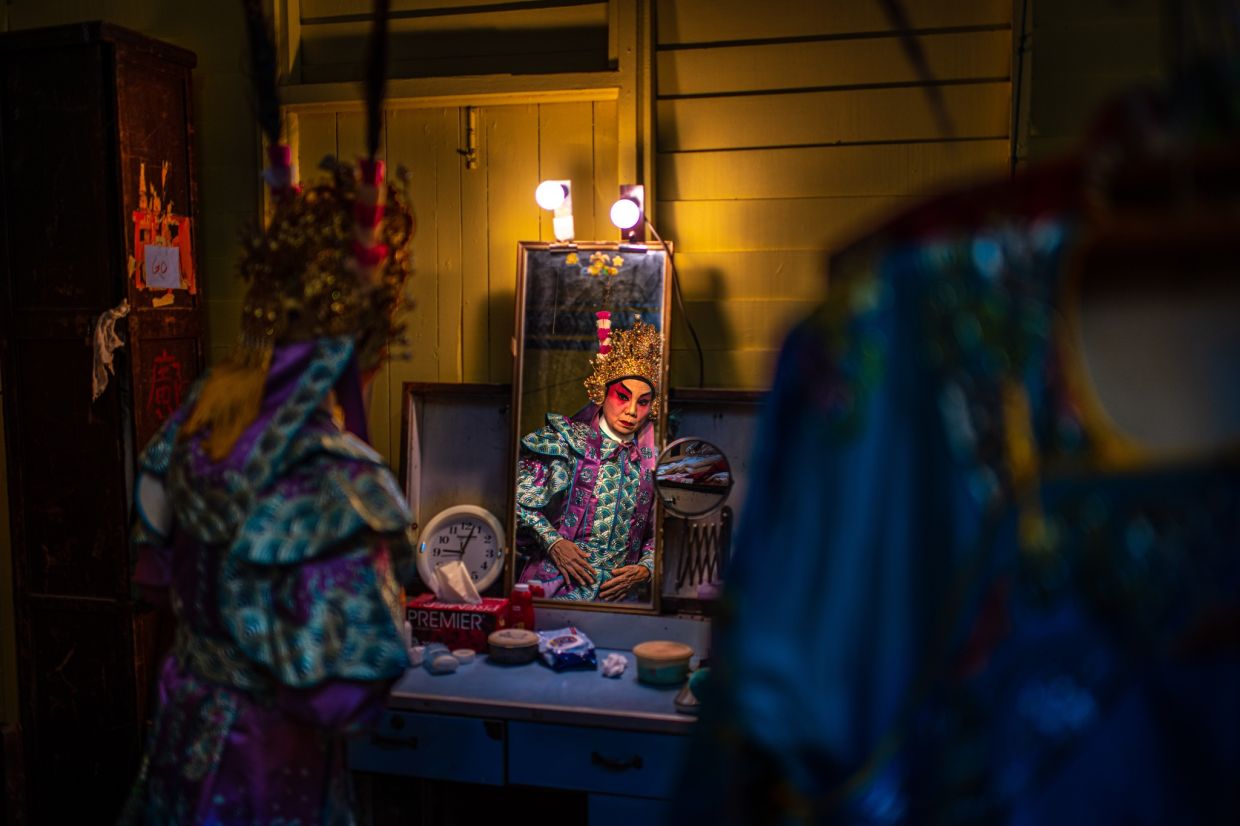Cantonese operas and similar performances offer plenty of impactful scenes to capture.
Photography is not just about capturing images but also storytelling.
In Malaysia’s colourful multi-cultural life, photography can convey narratives that immerse viewers in scenes they have never actually witnessed, giving close-ups or insights into a different world.
Malaysian daily life brims with stories and colourful events, presenting fascinating subjects to document into compelling narratives.
In photography storytelling, a series of images is more impactful than a standalone picture.
Such images allow the photographer to narrate a story piece by piece, showcasing different aspects of an event or routine and providing understanding and insight into the subjects photographed.
For instance, documenting the sequence of the elaborate preparations for a Cantonese opera offers a glimpse into this rich cultural tradition and shows the processes behind the scenes, from selecting the costume to make-up by the artists involved.
The opera, originating from China’s Guangdong province during the late Ming Dynasty, showcases singing, acting, martial arts, and colourful costumes, making it an ideal subject for storytelling.
Capturing these images can transport viewers into the event, giving them a glimpse of the emotions and preparation involved.
Of course, selecting the right gear is crucial to portray these narratives.
For street and cultural photography, lens choice significantly impacts storytelling.
A 35mm lens is recommended for its versatility; it is wide enough to capture the essence of bustling street scenes or cramped interiors yet offers a natural perspective that does not distort subjects.
It allows photographers to move close to their subjects, engaging intimately without being intrusive.
On the other hand, a 24-105mm lens offers a broad focal range from wide-angle to medium telephoto.
This flexibility lets photographers switch between capturing scenes and detailed close-ups without changing lenses.
At 24mm, the lens can encompass wide scenes such as street markets, landscapes, and large groups at cultural events.
The 105mm is excellent for portraits. It can capture expressions and details from a respectful distance while maintaining the natural dynamics of the scene.
Exploring different perspectives can also enrich the narrative.
Using leading lines and manipulating light and shadows can direct the viewer’s attention and enhance the storytelling.
Different perspectives, such as high-angle shots or close-ups, highlight the scene’s diversity and vibrancy.
A high-angle shot, for example, can capture scale and energy, while a close-up focuses on the craftsmanship and tradition.
Effective storytelling in photography also involves thorough planning.
Being familiar with the cultural calendar and understanding how it would be performed or staged can help with the shots.
However, the magic in photography often lies in unplanned or spontaneous moments – a sudden burst of laughter, an animated gesture, or a moment of curiosity.
These candid shots portray the essence of Malaysian life, capturing the rhythm of daily chores and the vibrant chaos of local festivities.
Storytelling through photography is to craft a visual tale and draw viewers into the pictures, transporting them to the scene as though they were there to witness it firsthand.
Telling stories through these images not only bridges cultures but also connects hearts.















